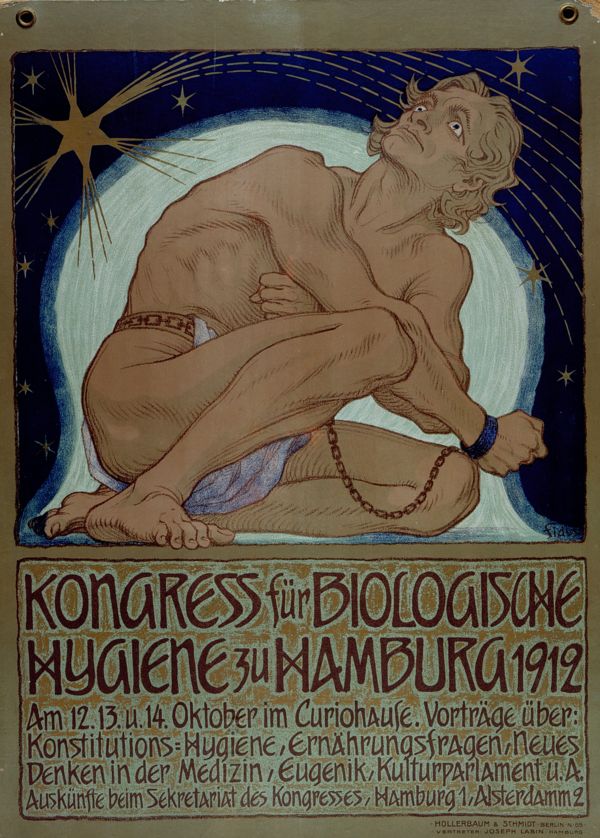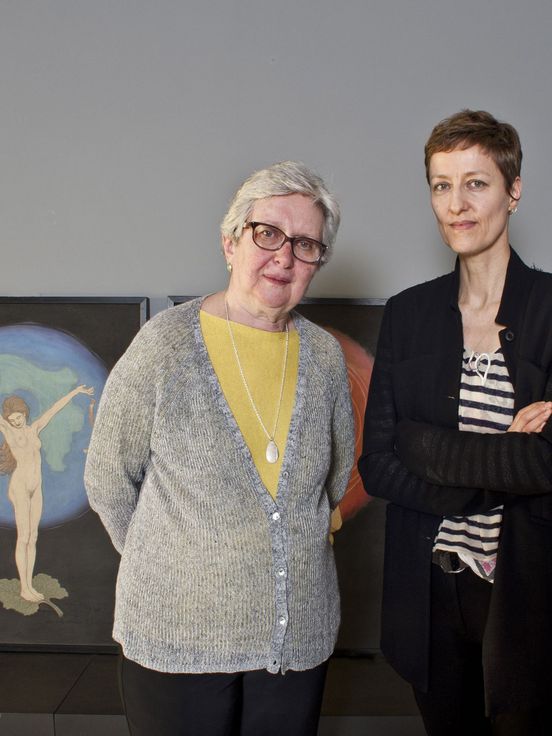
Fidus (Hugo Höppener), Plakatdruck für den Hygienekongress zu Hamburg, 1912
© VG Bild-Kunst, Bonn 2019The book illustrator, painter and publisher Hugo Höppener was known as “the artist of the illuminable”. Born the son of a confectioner in Lübeck, he demonstrated his talent as a painter at any early age. During a study of art in Munich, he met the “apostle of nature” and painter Karl Wilhelm Diefenbach (1851 – 1913). The latter had been condemned to eight days imprisonment for public nudity and Höppener served this sentence for the older master, earning the name Fidus - the “faithful” – from Diefenbach. Fidus’ work is also characterised by motifs such as naked human figures in natural settings. His illustrations appeared in numerous magazines, books and other printed material. His perhaps most popular work, “The Prayer to Light”, became an icon of the Life Reform Movement. Fidus designed the poster for a congress on “biological hygiene” that took place in Hamburg in 1912, where he also delighted listeners with a slide lecture on his art of “rising life”. His poster shows a “Nordic” man in the process of breaking his bonds and rising up to the stars. After the First World War, interest in Fidus’ work as an illustrator ebbed, although he hoped for a comeback when Hitler came to power. However, the effusive expression of his images did not interest the Nazis, and when Fidus died in 1948, his art had been almost forgotten. It was not until the seventies that it was rediscovered.
The Fidus Archive of the Berlinischen Galerie includes designs for temple buildings, prints and postcards of the artist’s works, his library, correspondence, diaries, ex libris, exhibition documents and comprehensive biographical material.
